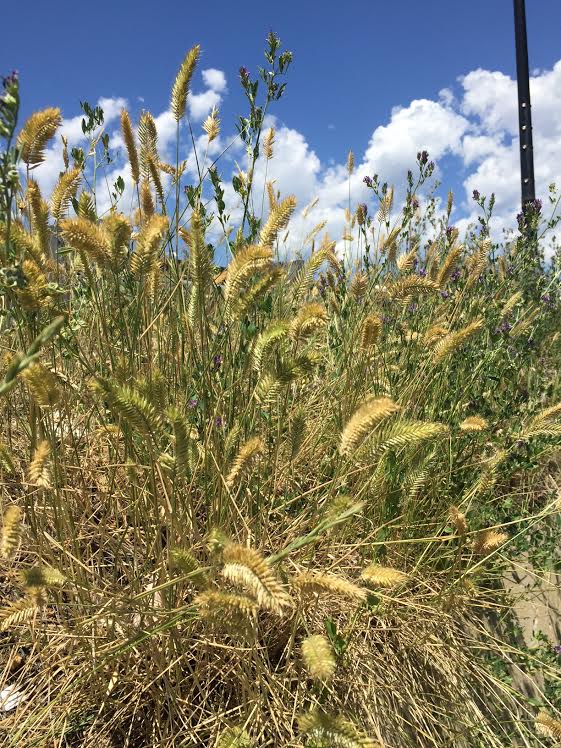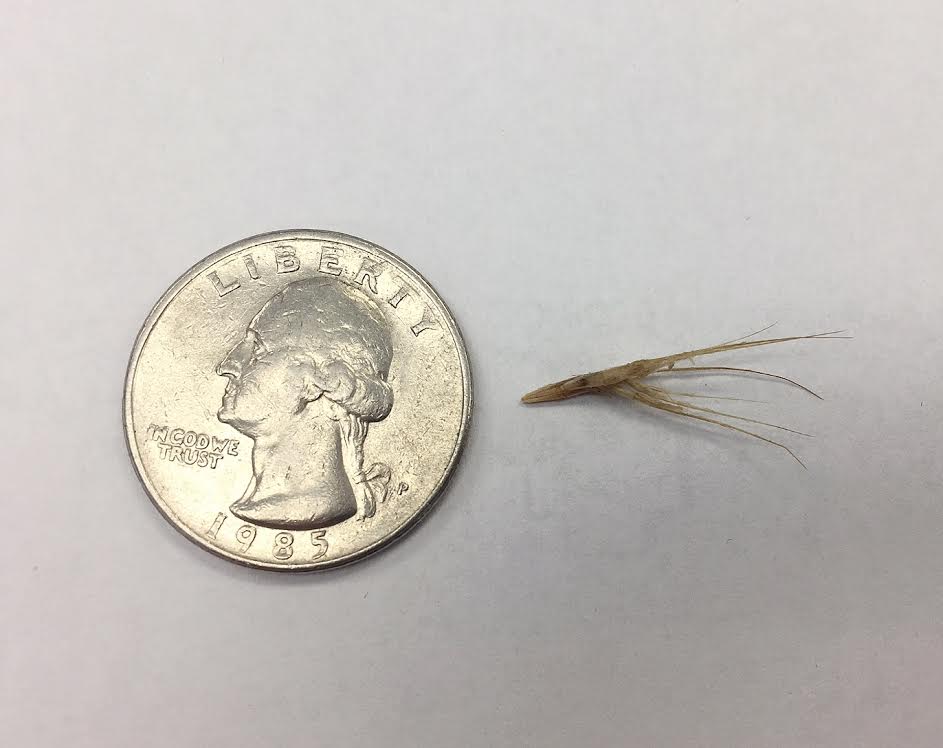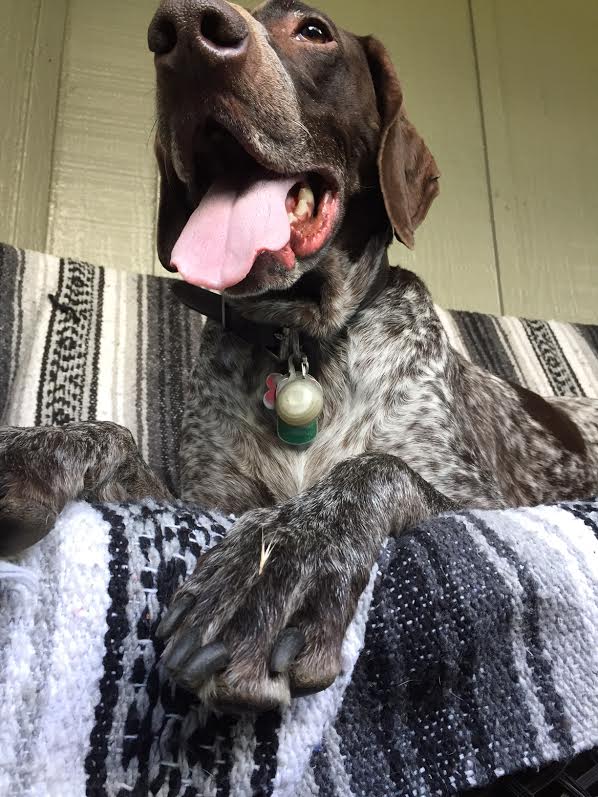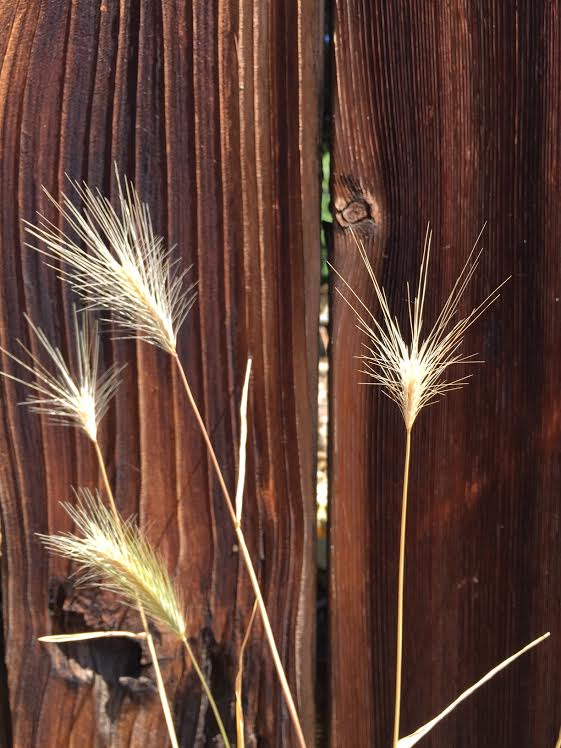
Every Spring brings about new plant life cycles, lovely weather, beautiful wild flowers, and, unfortunately, foxtail seeds. Foxtail seeds, also called grass awns, are prevalent in our Colorado outdoors and can be very hazardous to pets. As the tall stalks of grass begin to dry out in the Spring and Summer heat, the seeds break apart and can become lodged in a variety of areas. Because of the seed’s spiked front and barbed end, they are able to travel swiftly in one direction and rarely make their way back out on their own. Most commonly they will get lodged in ears, noses, and under the skin (especially on feet in between toes).

When a grass awn gets stuck in a dog’s ear the usual associated symptoms include head shaking, walking with head tilted to one side, or pain around the ears. When a seed goes up a nose most patients begin sneezing very frequently with nasal discharge and/or frank blood. When a seed gets under the skin most dogs will begin to lick at the area incessantly and a raised bump or puncture wound is usually present at the entrance site.
There are several things owners can do to protect their pets from foxtail foreign bodies. First off, owners can limit off leash roaming through fields of tall grasses during the Spring and Summer. For dogs with lots of fur, owners can keep feet clipped (especially in between the pads on the bottoms of the feet) so there is less fluff for the seeds to lodge themselves into. Lastly, owners can and should diligently check over their dogs after outdoor activities to locate any seeds that may be in their fur and pull them off before they have a chance to migrate into the body.
If you think your pet might be dealing with an embedded grass awn or have questions about foxtail protection please give our office a call!